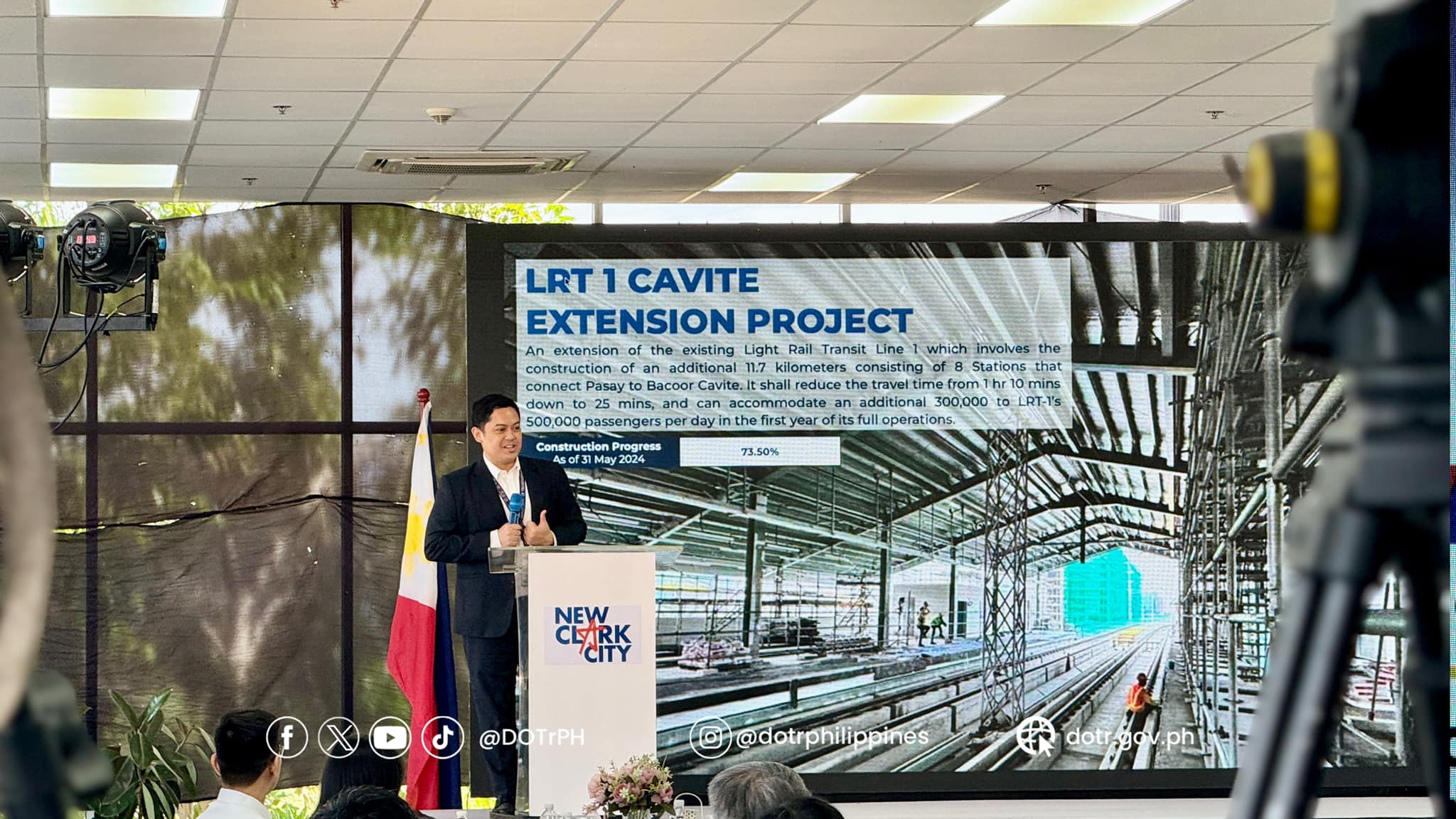
Department of Transportation
The Philippines’ first underground railway system, the Metro Manila Subway Project, has reached “significant progress” in its construction, a senior Department of Transportation (DOTr) official said.
Speaking at the Presidential Communications Office’s (PCO) “Build Better More” Infrastructure Forum held last week to showcase the progress of legacy projects and achievements in Infrastructure Flagship Projects (IFPs) under the administration of President Ferdinand R. Marcos, Jr., DOTr Usec. Timothy John Batan said “the Metro Manila Subway, touted as the country’s most ambitious infrastructure project to date, has already attained significant progress in its construction.”
As of May 31, 2024, the subway project has reached 14.48% of its target completion, Batan told participants during the forum.
Aside from the Metro Manila Subway Project, Batan listed the following as among the DoTr railway sector infrastructure flagship projects gaining milestones:
- Unified Grand Central Station, as of May 31, 2024, is 81.42% complete. This station will connect four railway lines in Metro Manila, namely LRT-1 serving the commuters west and south of Metro Manila; MRT-3 serving the central area of Metro Manila; MRT-7 serving the north; and the Subway Project to serve the eastern side of Metro Manila.
- MRT-3 Rehabilitation Project, as of May 31, 2024, is 83.11% complete. This project involves the restoration of the existing Metro Rail Transit Line 3 to design condition. The rehabilitation is expected to cut travel time from one hour and 15 minutes to 45 minutes, and is also expected to restore capacity from 300,000 to 600,000 passengers per day.
- LRT-1 Cavite Extension Project, as of May 31, 2024, is 73.50% complete. This is an extension of the existing Light Rail Transit Line 1 and the project involves the construction of an additional 11.7 kilometers consisting of eight stations that will connect Pasay to Bacoor, Cavite. It is expected to cut travel time from one hour 10 minutes to 25 minutes. An additional 300,000 passengers can be accommodated to the LRT-1’s 500,000 daily passengers in the first year of its full operations.
- MRT Line 7, as of May 31, 2024, is 70.98% complete. This is a 22 km-long rail transit system that will connect dense areas of northeast Metro Manila. It will have 14 stations linking North Avenue, Quezon City to San Jose Del Monte, Bulacan. It is expected to reduce travel time from North Avenue to San Jose del Monte, Bulacan from two to three hours to 35 minutes. It can accommodate 300-800,000 passengers daily.
- North-South Commuter Railway Project is a 147-kilometer elevated railway line that will connect three regions in Luzon, including Metro Manila. It is now in “advanced stages across” the alignment and expected to benefit about 800,000 passengers daily on its opening year. As of May 31, 2024, the Tutuban to Malolos segment is 42.10% complete; Malolos to Clark segment is 31.25% complete; and the Manila to Calamba segment is 5.87% complete.
- The MRT Line 4 and PNR South-Long Haul Project are in their pre-construction stage, while the Mindanao Railway Project Phase I is in project development phase.
The three-day forum was a comprehensive platform to promote the administration’s “Build Better More” Infrastructure program, to broaden the understanding of government communicators and media practitioners of the strategic framework and status and timeline of the infrastructure development policies and programs of the present administration.
The forum was participated in by more than 40 journalists from the tri-media sector and more than 70 government communicators from various departments and their attached agencies and government-owned and controlled corporations.
Among the departments which participated were the Department of Transportation, Department of Public Works and Highways, National Economic and Development Authority, Department of Finance, Department of Agrarian Reform, Department of Health, and Philippine National Police.
Among the GOCCs were the Clark International Airport Corporation, Subic Bay Metropolitan Authority, Bases Conversion Development Authority, Philippine Retirement Authority, and Clark Development Corporation. (PR)
